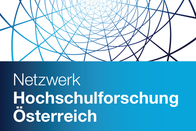Mixed Methods Research in Education:
Integrating Qualitative and Quantitative Methods in Research of Kindergarten, Schools, Higher and Further Education Joint Conference of the German Sociological Association’s (DGS) Section Education (Bildung und Erziehung), and DGS Working Groups Mixed Methods (in Sections Methods of Empirical Social Research and Qualitative Social Research) and Science and Higher Education Research 16th – 17th November 2023, Leibniz University Hannover, Conference venue: Königlicher Pferdestall (Royal Horses‘ Stable)
No matter whether studying Kindergarten, primary and secondary schools, special education, higher education and/or further or adult education, social research on education has to consider multi-level structures of educational processes encompassing individual (microlevel), organizational (meso-level) and/or societal (macro-level) settings. Individual practices as well as institutional frameworks vary historically, between societal contexts and across countries. Therefore, considering different perspectives and interrelating them is an integral part of educational research. Mixed method approaches open up avenues to integrate different perspectives and levels of analysis; and relating them is a core challenge in designing mixed methods studies as well as performing integrative analyses. With the establishment of mixed methods research in recent decades, methodological, terminological, and procedural considerations have been reflected on why and how different perspectives on a research object can be combined in order to arrive at a broader or deeper understanding.
Qualitative investigations enable us, for example, to analyse individual perceptions of educational situations, subjective relevance, biographical processes and dense observations of interactions between educational actors. Quantitative studies discover, for example, causal relationships on or between the different levels of educational situations, show social trends and detect differences between groups of actors.
Even though most research in the field of education has been and still is mono-methodological, educational research has been open to different combinations of qualitative and quantitative methods (Creswell & Garrett 2008; Leech & Onwuegbuzie 2009). In recent years, we find more and more applications of mixed methods research as well as method development in various areas of educational research, for example, for Kindergarten (e.g., Braund 2022; Clark 2005), school education (e.g., Assen et al. 2016; Smyth 2016), special education (e.g., Corr et al. 2020; Pfahl & Powell 2011), higher education (e.g., Schneijderberg & Götze 2021), and further/adult education (e.g., Addae & Quan-Baffour 2015). Qualitative and quantitative analyses are already challenging endeavours on their own. Even more challenging is the integration of a mixed methods research design (Baur et al. 2017). Of course, depending on the research question, it must be considered whether mono-method or mixed methods designs are appropriate. Nevertheless, mixing qualitative and quantitative approaches can help, among other things, to discover mechanisms of educational processes and practices at different levels and to connect subjective perceptions with objective conditions. Furthermore, by combining different methods, researchers can use the strengths of each to compensate the constraints of others.
At the conference we would like to reflect on the blind spots inherent in any qualitative, quantitative or mixed methods approach as well as on advantages and disadvantages from this integrative perspective and discuss how different qualitative and quantitative approaches can be combined to advance our understanding of educational processes and structures. Moreover, we also want to discuss the practical and institutional disadvantages, challenges, limits as well as the scope of integrative research. The contributions can discuss mixed methods in educational research in three different ways: First, the results of (a) ongoing, (b) completed, or alternatively © problem outlines of planned mixed-methods projects in educational research can be presented. Based on concrete examples, these presentations should provide insights into the challenges and problems of integrating results from different perspectives and illustrate with examples if and how the methods and results complement each other. They should point out if there is or respectively what is seen as added value of the mixed methods analysis. Second, developing a mixed methods perspective, results from mono-methodical (qualitative or quantitative) projects can be presented. The focus should be on a systematic reflection of „blind spots“ of the method(s) used, and on discussing which questions remain to be tackled by a mixed methods research design. These presentations should therefore reflect to what extent mixed or multi methods approaches could enrich a specific empirical analysis. Third, more theoretical or more methodological contributions can be submitted that discuss respective or practical implications of mixed methods approaches in educational research. Educational research in general (e.g., Murphy 2022), and mixed methods research on education in particular, is led by a variety of social theories. For example, theory-led or reflecting research to be discussed at the conference may address social mechanisms operating in the domains of collective experience and social interaction in education (organizations). One striking example, calling for the integration of various perspectives and mixed methods approaches is social inequality in education. Tilly (1999, 2001) proposes four social mechanisms explaining inequality — interactions of exploitation, opportunity hoarding, emulation, and adaption —, which is based on categories of citizenship, class, ethnicity/race, gender, etc. Exploitation and opportunity hoarding are generative social mechanisms aiming for individual and collective actors’ advantages (e.g., income, prestige, power, wealth, etc.).
Tilly’s (1999) argument for inequality made durable in organizational form adds to the complexity of analysing educational decision-making by establishing a micro-meso-macrolink. The emulated and adapted meso-level representations (i.e., organizations) of “the invention of procedures that ease day-to-day interaction, and the elaboration of valued social relations around existing divisions” (Tilly 1999: 97) has been widely studied in schools (e.g., Bourdieu 1996; Kahn 2015; Young 1958), universities (e.g., Boliver 2017; Ding et al. 2021, Sandel 2021), etc. According to Tilly (1999: 6), studying “the causes, uses, structures, and effects of categorical inequality” answers the HOW and WHY questions of government policies concerning investment, redistribution, etc., the organization and operation of schools, universities, etc. rooting in categorical forms of discrimination to produce and establish durable inequality.
Research questions in the educational fields of Kindergarten, schools, higher and further Education, including special education across all fields, to be discussed at the conference may concern, but are not at all limited to
- What are the causes, uses, structures, and effects of categorical inequality, and how are they embedded in government policies?
- How is educational decision-making embedded in educational contexts, for example, how do teachers or career counsellors impact on students’ or parents’ educational decisions?
- How are regional educational opportunities related to social educational inequalities and how (by which actors, with which means) are regional educational accesses governed and justified?
- How do educational opportunities differ across country-specific education systems, historically and at present, and how are they linked to national educational policy?
- How and in which education policy contexts has educational permeability developed over time, and how does it affect educational trajectories and related social inequalities (e.g. gender typical trajectories)?
- How is the recognition of prior learning (RPL) organized in different contexts (regions, countries) and who benefits from different models of RPL?
- How can experimental research on educational processes and decision-making be connected to and enriched by qualitative approaches?
Addressing core issues of educational research, we would like to reflect on the appropriateness of different methodological approaches and the role of mixed methods studies. Given manifold differences in the objects of educational research, research
questions, and approaches, we aim at exchanging insights in practical experiences, methodological considerations, and theoretical approaches when integrating two or more methods. Since the training and socialization of researchers often takes place in largely
separate research traditions, this conference should also serve to cross borders in order to discuss jointly how qualitative and quantitative methods can be combined in educational research, how they complement each other, and which problems these mixed analyses are
facing. Ideally, submissions should address the following aspects:
- Research topic, research question, and project context
- Motivation for mixed methods research
- Theoretical and conceptual embedding
- In case of empirical contributions: Data and methods (with an emphasis on how and
why data, methods, and results are integrated) - (Preliminary) results, with a critical reflection on the integrative analysis
Abstract, submission deadline, and organizing team:
Please send your abstracts in English (max. 500 words) as PDF file to angela.graf@tum.de and schneijderberg@incher.uni-kassel.de. The deadline for submission is 14 April 2023.
Notification of selected papers will be send by 12 May 2023, at the latest. The conference language is English, and will be held in person at Leibniz University in Hannover, Germany.
Organizing team: Christian Imdorf (University of Hannover), Angela Graf (TU Munich, bidt), Andrea Hense (SOFI Göttingen) and Christian Schneijderberg (University of Kassel).
References
Addae, D., & Quan-Baffour, K.P. (2015). The place of mixed methods research in the field of adult education: design options, prospects and challenges. International Journal of Education and Research 3(7), 151–162.
Assen, J. H. E., Meijers, F., Otting, H., & Poell, R. F. (2016). Explaining discrepancies between teacher beliefs and teacher interventions in a problem-based learning environment: A mixed methods study. Teaching and Teacher Education 60: 12–23.
Baur, N., Kelle, U., & Kuckartz, U. (2017). Mixed Methods–Stand der Debatte und aktuelle Problemlagen. Kölner Zeitschrift für Soziologie und Sozialpsychologie 69(2): 1–37.
Boliver, V. (2017). Misplaced optimism: how higher education reproduces rather than reduces social inequality. British Journal of Sociology of Education 38(3): 423–432.
Bourdieu, P. (1996). State nobility: Elite schools in the field of power. New York: Polity.
Braund, H. (2022). Thinking about Kindergarten thinking: A mixed methods study. Frontiers in Psychology 13: 933541, https://doi.org/10.3389%2Ffpsyg.2022.933541.
Clark, A. (2005). Ways of seeing: Using the Mosaic approach to listen to young children’s perspectives. In: A. Clark, A.T. Kjørholt, & P. Moss (Eds.), Beyond listening: Children’s perspectives on early childhood services (pp. 29–49). Policy Press.
Corr, C., Snodgrass, M.R., Greene, J.C., Meadan, H., & Santos, R.M. (2020). Mixed Methods in Early Childhood Special Education Research: Purposes, Challenges, and Guidance. Journal of Early Intervention 42(1): 20–30, https://doi.org/10.1177/1053815119873096
Creswell, J.W., & Garrett, A.L. (2008). The “movement” of mixed methods research and the role of educators. South African Journal of Education 28: 321–333.
Ding, Y., Wu, Y., Yang, J. & Ye, X (2021). The elite exclusion: stratified access and production during the Chinese higher education expansion. Higher Education 82: 323–347, https://doi.org/10.1007/s10734-021–00682‑y.
Khan, S. (2015). The Education of Elites in the United States. L’Année sociologique 65(2): 171–191.
Leech, N.L. & Onwuegbuzie, A.J. (2009). A typology of mixed methods research designs. Quality & Quantity 43: 265–275.
Murphy, M. (2022). Social Theory and Education Research (2nd ed.). London: Routledge.
Pfahl, L. & Powell, J.J.W. (2011). Legitimating school segregation. The special education profession and the discourse of learning disability in Germany. Disability & Society 26(4): 449–462.
Sandel, M.J. (2021). The tyranny of merit: What’s become of the common good? Penguin.
Schneijderberg, C., & Götze, N. (2021). Academics’ Societal Engagement in Cross-country Perspective: Large‑n in Small‑n Comparative Case Studies. Higher Education Policy 34(1): 1–17, https://doi.org/10.1057/s41307-021–00227‑z.
Smyth, E. (2016). Students’ Experiences and Perspectives on Secondary Education. Institutions, Transitions and Policy. London: Palgrave Macmillan.
Tilly, C. (1999). Durable Inequality. Berkeley: University of California Press.
Tilly, C. (2001). Relational origins of inequality. Anthropological Theory 1(3): 355–372.
Young, M.D. (1958). The Rise of the Meritocracy 1870–2033. An Essay on Education and Equality. London.






